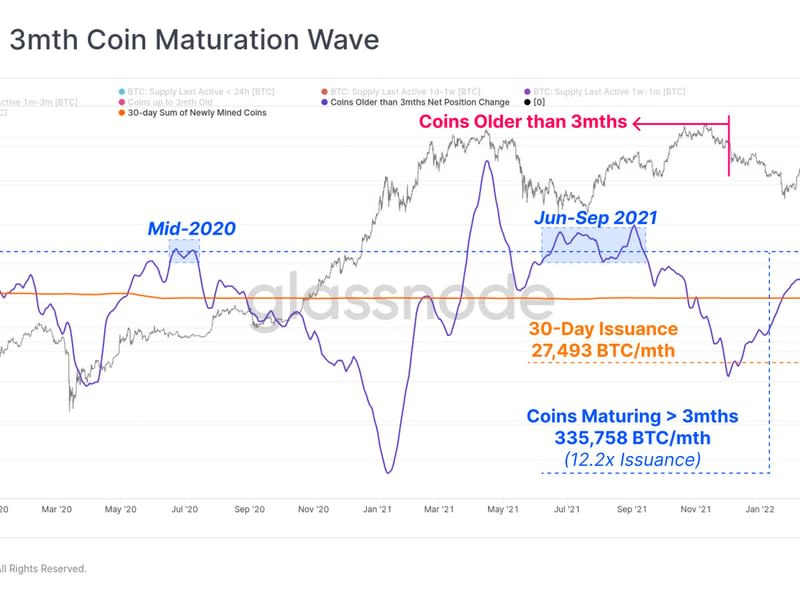Bitcoin HODLers Unfazed by Macro and Geopolitical Risks
Despite the macro and geopolitical risks currently heightened by Russia’s invasion of Ukraine, bitcoin (BTC) HODLers continue to accumulate, according to blockchain data from Glassnode.
Bitcoin's price is higher since the invasion started last week, gaining 15% in the last 24 hours. The largest cryptocurrency by market capitalization was trading around $43,500 at press time.
On-chain data from Glassnode suggests it is a HODLer-dominated market, meaning investors are holding onto their cryptocurrency for future profits rather than selling.
HODLing is crypto slang, referring to a buy-and-hold strategy where traders stay invested and refrain from selling when the asset price decreases.
“Despite this very uncertain macro and geopolitical backdrop, the behavior of bitcoin HODLers maintain a remarkably bullish conviction,” said the Glassnode report, published Tuesday.
3 Charts Showing Strong Hands Stacking
1. Illiquid Supply
Illiquid Supply, which tracks the volume of coins held in wallets with little to no history of spending, has surpassed the May 2021 peak, reaching 76%.
“We can make an estimation that this is likely, in part, a sign of accumulation,” James Check, analyst at Glassnode, said in an email to CoinDesk.
These often represent coins socked away in cold storage, or storing crypto offline, and the wallets of HODLers who undertake a dollar-cost averaging strategy, said Glassnode’s weekly report.

2. Realized Cap HODL Waves
The Realized Cap HODL wave bands older than three months are pushing to new highs of 72%. This means that 72% of the dollar value stored in bitcoin is held by coins three months and older.
“This is typical of bear markets where long-term investors see value and simultaneously slow their spending,” said the report. “Note that much of this recent uplift is driven by the three-month- to six-month-old age band. These are coins that are approaching or in the process of crossing the short-to-long-term holder boundary of 155 days.”

3. Three-Month Coin Maturation Wave
Glassnode data also tracks the coin volume crossing the three-month age threshold over the last 30 days.
“Statistically, the older a coin is, the more likely it is held by a 'strong hand' HODLer and less likely to be spent and sold,” said Check.
A similar magnitude of HODLing behavior was seen in mid-2020 and June-September 2021, both of which preceded upside moves.

The report noted that although uncertainty from macroeconomic events prevails, coins continue to be withdrawn from exchanges, are moving into increasingly illiquid wallets and are maturing into increasingly senior age bands at a high rate.
These look like long-term holder coins (wallet addresses holding bitcoin greater than a 155-day period) in the making and therefore less likely to be spent and sold, according to Glassnode.
“It is now key to watch in case these coherent trends begin to reverse, which may signal broad-scale loss of confidence,” said the report.
